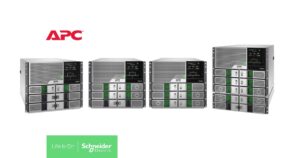For years, the pendulum of data processing strategies has swung back and forth between centralized and decentralized approaches as the market evolves. The latest iteration of this ever-shifting landscape revolves around whether data center assets should reside on-premise or in the public cloud. Newer trends, such as artificial intelligence (AI) and digital transformation, alter this balance and add to the complexity of data center capacity management decisions.

To better understand this topic, I spoke with Thomas Humphrey, North American Business Development Manager for Schneider Electric Modular Data Centers and Todd Boucher, Founder of Leading Edge Design Group. Our joint analysis of “cloud vs on-premise” will be shared in a three-part blog series.
This first blog post addresses how to set the right expectations as market trends and COVID have altered cloud strategies and changed the nature of data center operations.
Joe Kramer: What lessons were learned a few years ago when everyone seemed to embrace a shift from on-premise to the public cloud?
Todd Boucher: We saw many customers attempt to make a wholesale shift to the cloud, and there was a lot of cost overrun in their utilization. As you move more resources to the cloud, you need to add more staff or bring in different partners to support those resources. This is the opposite of most expectations because the cloud was promoted as a way to reduce staff and control costs.
Joe: This conversation about on-premise vs. cloud often revolves around OpEx vs. CapEx costs. Is that the right question to ask?
Thomas Humphrey: On our end, we’re always talking to customers about the capital expense. And if we’re building a data center or a prefabricated modular data center, they say, “That’s a big outlay.” Meanwhile, the cloud salespeople say, “Put it in the cloud. You can offset that capital cost by just moving to this OpEx model.” But I don’t think everybody understands how that OpEx model unfolds over time. On day one, the OpEx model might look good at $10,000 a month. Over time, utilization increases and costs rise.
Todd: Today, customers understand the accounting side of it much more than six years ago when there were a lot of surprises and cost overruns. We can now have a conversation about the total cost of ownership and a five-year return on investment as opposed to just CapEx vs. OpEx.
Joe: What has been the impact of COVID on cloud vs. on-premise?
Todd: Since COVID, the shift to a hybrid strategy (a combination of both cloud and on-premise) has picked up. Customers realized that cloud-first worked for some applications and workloads but not for others. Now, customers, from enterprises down to small to medium-sized businesses (SMBs), are evaluating what is best for the business. They are discovering that the choice between cloud and on-premise is not binary. Rather, it is a continuum or balance between cloud and on-premise that best meets the goals for resiliency, financial performance, application performance, latency, etc.
Thomas: When COVID hit, everybody was in a panic because we thought things would slow down, but the opposite happened. With the advent of remote learning and the remote workplace, the demand for hyperscale solutions went through the roof. Our response was to provide all that hardware infrastructure, whether prefabricated data centers or traditional stick-built infrastructure.
Joe: How did COVID impact the ability to maintain needed staff?
Todd: COVID and the Great Resignation made customers wonder if their strategy still made sense. Moving resources to the cloud requires more staff to support those instances and applications. There’s a resource balance between what’s on-premise and in the cloud. Whether that’s a combination of cloud, hybrid cloud, and an on-premise modular solution, or all on-premise as in a full data center in a building, they questioned whether they had the right resources to support the strategy.
Joe: COVID also affected real estate costs because of the shift to remote work. What are the lingering effects of that?
Todd: Pre-COVID, real estate for most companies was in high demand and the cost per square foot of enterprise data centers was astronomical. Now, companies look at this paradigm differently, saying, “Wait a second, we have a lot of real estate available and we want to utilize that real estate in a meaningful way.” So, as I think about costs, if I already own this depreciated real estate asset, it might make more financial sense to use it as a data center.
Thomas: We also see more interest in prefabricated modular data centers, which quickly adds space to support new applications for Internet of Things (IoT) devices and connections. We’re getting requests from hospitals, schools, manufacturing plants, and more applications. This approach can help solve the question of cloud vs. on-premise, giving customers an option that addresses the latency and bandwidth issues that come into play with the cloud.
In Part 2 of our blog series of cloud vs. on-premise, we will discuss the importance of data center planning and the critical aspects of how applications act as building blocks of a sound hybrid data center strategy. In the meantime, to learn more about useful approaches to data center planning, read our white paper “Quantitative Analysis for Prefabricated vs. Traditional Data Center.”




Add a comment